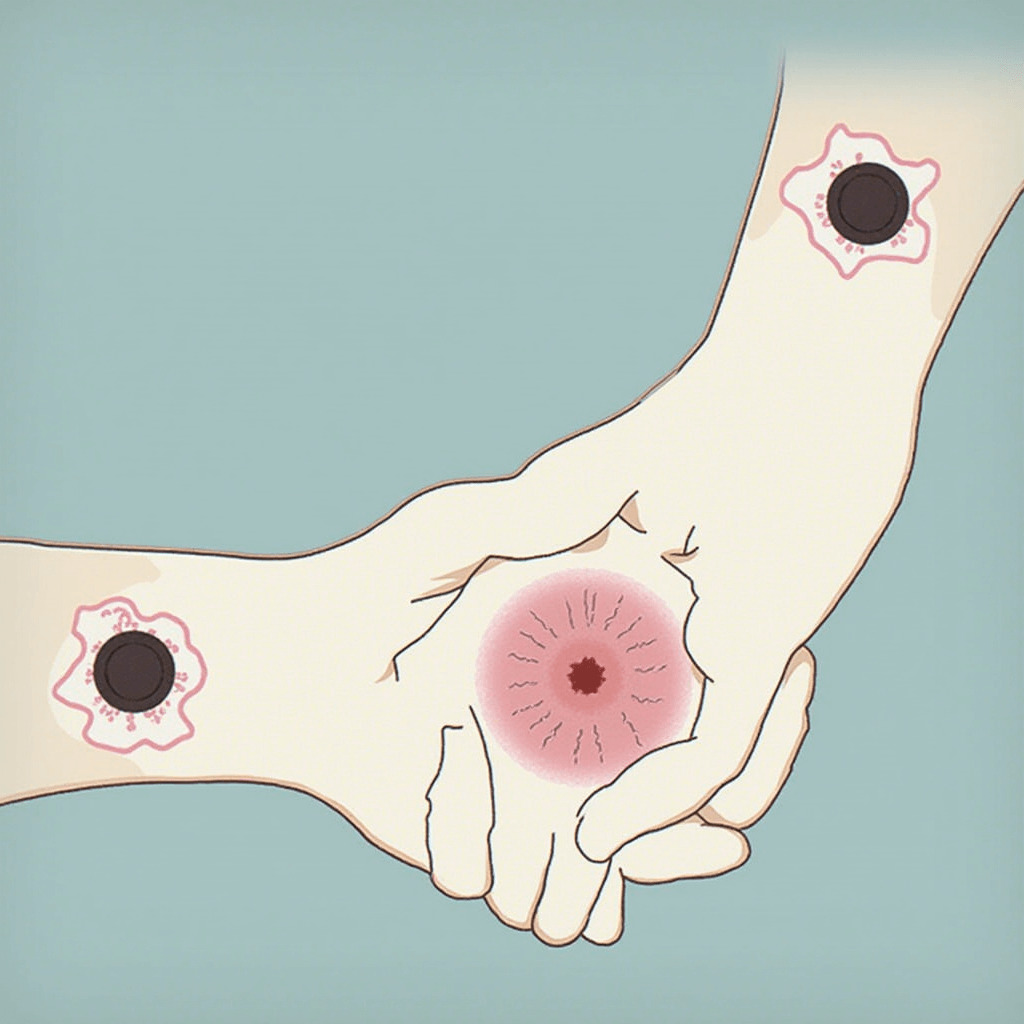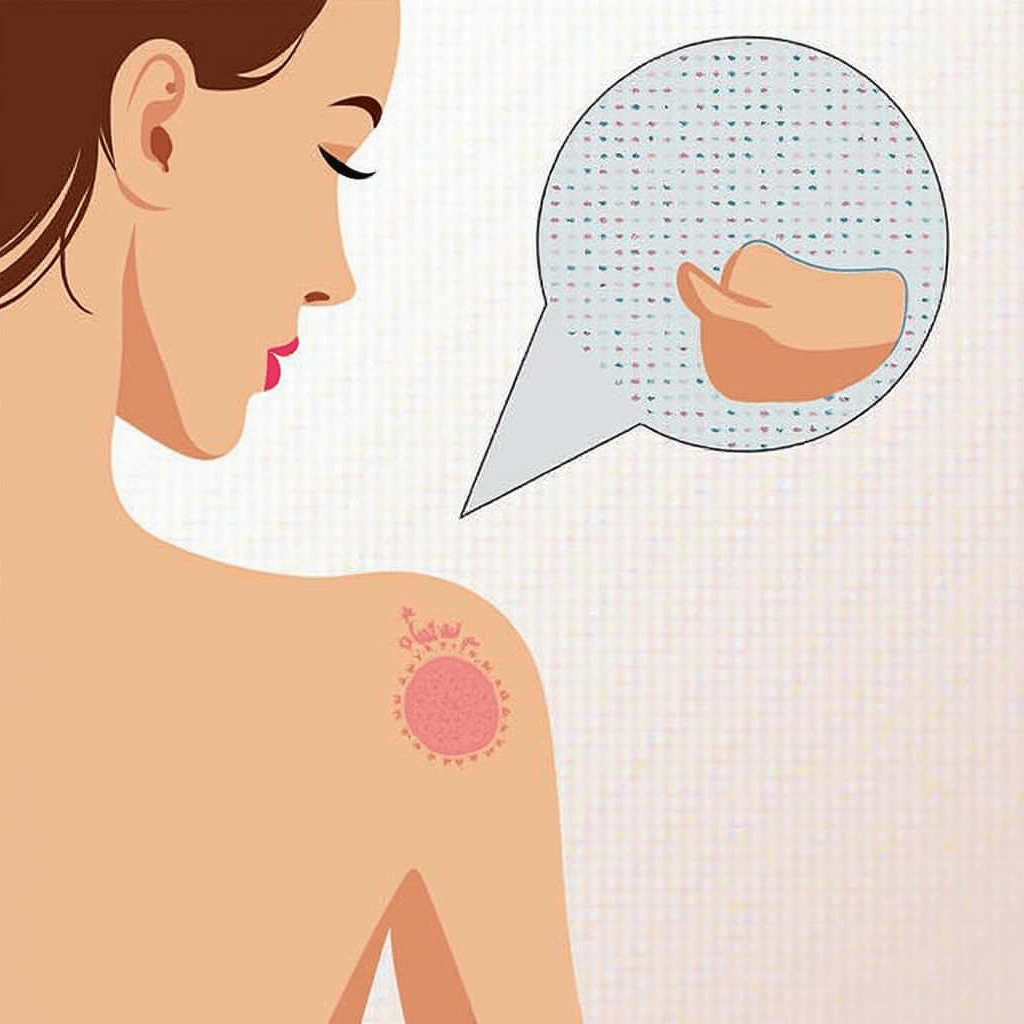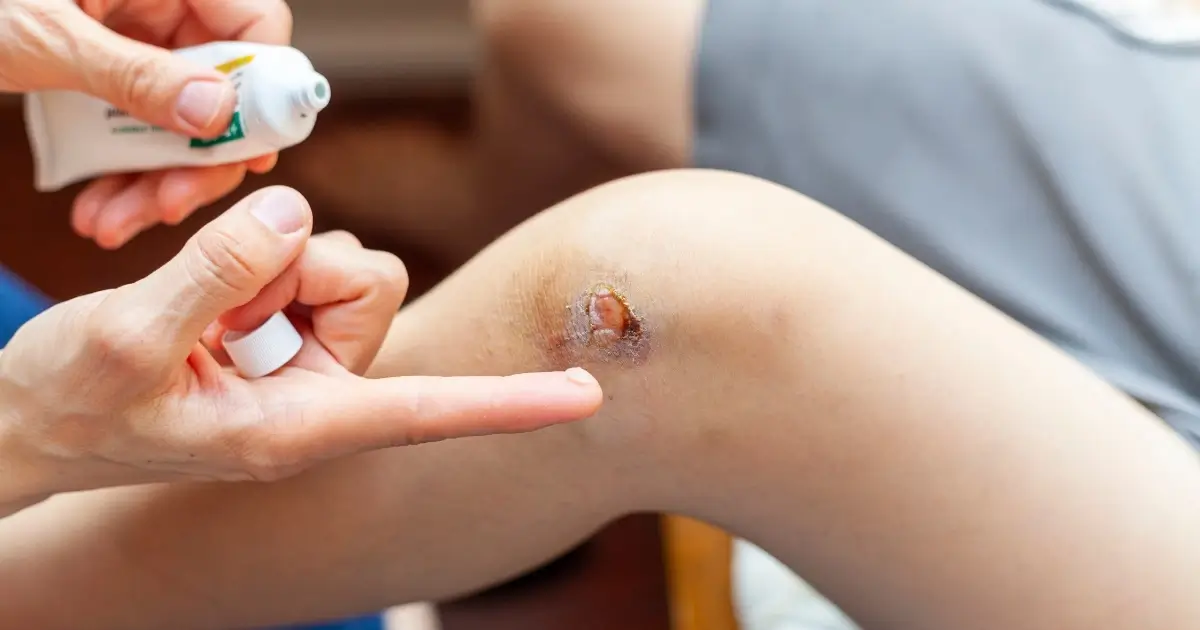Table of Contents
Bacitracin Topical Antibiotic is a widely recognized and trusted option in first-aid and minor infection prevention. As a powerful topical antibiotic, it is applied primarily to the skin to protect minor cuts, scrapes, and burns from bacterial infections. Bacitracin’s ability to combat common bacteria that can lead to complications in everyday wounds makes it an essential component of most first-aid kits. Its mechanism of action, which inhibits bacterial cell wall synthesis, makes it effective against a wide range of bacteria, particularly those commonly found on the skin.
This article explores the many applications of Bacitracin Topical Antibiotic, detailing its effectiveness in preventing infections, the best practices for safe and proper use, and considerations for individuals with specific sensitivities or allergies. With proper usage, Bacitracin remains a go-to remedy for treating minor injuries and preventing infection, offering both reliability and safety for everyday use.
Key Takeaways
- Everyday First-Aid: Bacitracin prevents infections in minor cuts, scrapes, and burns by providing an antibacterial shield that supports natural healing.
- Mechanism of Action: Bacitracin disrupts bacterial cell wall synthesis, making it effective against Gram-positive bacteria commonly found on the skin.
- Forms of Bacitracin: Available as a single-agent ointment or in triple antibiotic formulas (with Neomycin and Polymyxin B) for broader bacterial coverage.
- Wound Care Benefits: Reduces infection risk, speeds healing, and is safer than oral antibiotics due to its localized action. Correct use reduces resistance risk.
- Safety Considerations: Bacitracin is generally safe, but may cause mild irritation or allergic reactions. Overuse can lead to reduced effectiveness.
Bacitracin in Everyday First-Aid: From Cuts to Burns
Bacitracin Topical Antibiotic is an over-the-counter antibiotic that plays a crucial role in wound care by preventing infections in damaged skin. When bacteria enter a cut or scrape, they can rapidly cause an infection, leading to symptoms like inflammation, pus, and delayed healing. By applying Bacitracin Topical Antibiotic, an antibacterial shield is formed that halts bacterial growth, allowing the body’s natural healing processes to proceed. This makes Bacitracin Topical Antibiotic an essential component of first-aid routines, offering an effective and reliable means of preventing complications from minor skin injuries.


- Minor Cuts and Abrasions: Bacitracin is ideal for small cuts and scrapes, particularly those caused by minor accidents or sports injuries.
- Burns and Blisters: Even mild burns or popped blisters can become infected if not treated properly. A thin layer of Bacitracin helps to create a clean barrier against bacteria.
- Post-Surgical Care: Although not typically used for major surgeries, Bacitracin can be applied to small surgical wounds or stitches under the guidance of a healthcare provider.
How Bacitracin Works: Breaking Down Its Mechanism of Action
Unlike many antibiotics taken orally, Bacitracin is applied topically and works on the surface of the skin. It targets and interferes with bacterial cell wall formation, which is essential for bacterial survival.
- Targeting Cell Wall Formation: Bacitracin disrupts bacterial cell wall synthesis by interfering with the lipid transport process that bacteria need to build their cell walls. This interference weakens the bacteria, causing them to die off without harming the skin cells around them.
- Effectiveness Against Gram-Positive Bacteria: Bacitracin primarily targets Gram-positive bacteria, such as Staphylococcus aureus and Streptococcus pyogenes. These types of bacteria are commonly found on the skin and are frequent culprits in wound infections.
Forms and Combinations: Bacitracin Alone and in Triple Antibiotic Ointments
Bacitracin is available on its own as a single-agent ointment, but it is also commonly found in combination with other antibiotics, like Neomycin and Polymyxin B, in “triple antibiotic” formulas. Each form has specific uses and advantages, depending on the type and location of the infection.
- Bacitracin-Only Ointment: Ideal for those who may have sensitivities or allergies to other antibiotics, the single-agent Bacitracin formula is suitable for minor, superficial skin infections.
- Triple Antibiotic Ointment: The combination of Bacitracin, Neomycin, and Polymyxin B provides broader coverage by also targeting Gram-negative bacteria, which are less common but can be serious if they cause infections.
The Benefits of Using Bacitracin in Wound Care
Using Bacitracin Topical Antibiotic in wound care offers several benefits. First, it minimizes the risk of infection in minor wounds, which is crucial for faster and safer healing. Second, Bacitracin Topical Antibiotic‘s localized action reduces systemic exposure to antibiotics, making it a safer choice for most people. By applying Bacitracin Topical Antibiotic directly to the affected area, individuals can prevent bacterial growth without the risks associated with oral antibiotics, ensuring a more targeted treatment.
- Preventing Infections: By keeping bacteria at bay, Bacitracin allows minor wounds to heal faster without complications that could lead to abscesses or spreading infections.
- Reducing Scarring: Bacitracin helps keep wounds clean and free from infection, which may reduce the risk of scarring by preventing excessive inflammation or infection-induced tissue damage.
- Lower Risk of Antibiotic Resistance: Unlike systemic antibiotics, Bacitracin is less likely to contribute to antibiotic resistance when used correctly for superficial infections, as it doesn’t enter the bloodstream.
Possible side effects and safety considerations
While Bacitracin Topical Antibiotic is generally safe for most people, it’s essential to be aware of potential side effects and allergic reactions, especially with prolonged or excessive use. Some individuals may experience mild irritation, such as redness, itching, or swelling at the application site. In rare cases, more severe allergic reactions like contact dermatitis may occur. Overuse, particularly in combination with other antibiotics, could also lead to skin sensitization or reduced effectiveness of the ointment over time. It is important to follow the recommended guidelines for use and consult a healthcare provider if any adverse reactions are noticed.
- Skin Irritation: Some people may experience mild irritation, redness, or itching at the application site. This reaction usually resolves quickly once the ointment is discontinued.
- Allergic Reactions: In rare cases, Bacitracin can cause allergic contact dermatitis, characterized by a rash, swelling, and itching. Those with known sensitivities to antibiotics should be cautious and consider alternatives.
- Risk of Overuse: Overuse of Bacitracin, particularly in combination with other antibiotics, can lead to skin sensitization, reducing its effectiveness over time. It is advisable to follow recommended usage and avoid applying it to large areas of skin.
Bacitracin and Antibiotic Resistance: A growing Concern
While Bacitracin Topical Antibiotic is primarily used for minor, topical infections, there is still some risk of antibiotic resistance if it is overused or misused. Bacteria can adapt and develop resistance to Bacitracin Topical Antibiotic, making it less effective over time. Overuse or improper application can encourage the growth of resistant bacteria, diminishing the drug’s ability to treat infections in the future. It’s crucial to use Bacitracin Topical Antibiotic as directed and to follow healthcare advice to ensure its continued efficacy in wound care and infection prevention.
- Resistance in Common Bacteria: Though Bacitracin’s primary targets, like Staphylococcus aureus, are generally susceptible to it, cases of resistance have emerged, particularly in hospital settings where antibiotics are used frequently.
- Promoting Responsible Use: To minimize resistance, Bacitracin should only be used when necessary and according to guidelines. Healthcare providers encourage limiting its application to true infections or high-risk wounds to avoid promoting resistance.
Alternatives to Bacitracin: When to Consider other Options
For individuals with allergies, sensitivities, or cases where Bacitracin Topical Antibiotic is ineffective, there are several alternative antibiotics and antiseptic options that may be suitable for wound care. Alternatives like neomycin, polymyxin B, and mupirocin can offer similar antibacterial protection, while antiseptic solutions such as iodine-based products or hydrogen peroxide may also be used to prevent infection. However, it’s important to consult a healthcare provider to determine the most appropriate treatment, especially for those with known allergies or conditions that may affect antibiotic use.
- Mupirocin: Often prescribed for minor skin infections, Mupirocin is effective against Gram-positive bacteria and is particularly useful for treating impetigo.
- Hydrogen Peroxide and Iodine: For those seeking a non-antibiotic option, hydrogen peroxide and iodine solutions offer effective antiseptic properties without contributing to antibiotic resistance.
- Silver-Based Ointments: Silver sulfadiazine and other silver-based topical treatments provide antibacterial benefits and are frequently used for burns and large wound areas where infection risk is high.
Tips for Using Bacitracin Effectively
To get the most out of Bacitracin Topical Antibiotic and ensure optimal healing, proper application and wound care techniques are essential. Here are some practical tips:
- Clean the wound: Before applying Bacitracin, gently clean the area with water and mild soap to remove dirt and bacteria.
- Apply a thin layer: A small amount is usually enough. Avoid using too much, as it can trap moisture and delay healing.
- Cover with a bandage: After applying Bacitracin, cover the wound with a sterile bandage to keep it clean and prevent further contamination.
- Monitor for signs of infection: If the wound worsens with increased redness, swelling, or pus, stop using Bacitracin and consult a healthcare provider.
- Follow instructions: To avoid overuse, always follow the recommended application frequency to prevent resistance and ensure maximum effectiveness.
Bacitracin in Healthcare Settings: Beyond First Aid
While Bacitracin Topical Antibiotic is best known as an over-the-counter antibiotic for minor wounds, it also has valuable applications in healthcare settings. Some hospitals use Bacitracin Topical Antibiotic as a preventative treatment for surgical wounds or as a topical ointment in wound care for bedridden patients. Due to its limited absorption, Bacitracin Topical Antibiotic is safe for use on delicate skin areas, such as near surgical incisions, under careful supervision. This makes it a versatile and reliable option in both home and clinical care settings, contributing to infection prevention and wound healing.
Conclusion: Bacitracin’s Place in Effective Wound Care
Bacitracin Topical Antibiotic remains one of the most trusted and widely used treatments for minor skin infections and wound care. It is especially valued for its broad-spectrum activity against Gram-positive bacteria and its minimal systemic absorption, which makes it both safe and effective for the majority of individuals. Due to these properties, Bacitracin is a go-to option for addressing everyday skin injuries such as cuts, scrapes, and burns.
However, as with any antibiotic, responsible use is crucial to prevent the development of resistance and to ensure its continued efficacy. Overuse or misuse of Bacitracin could compromise its effectiveness, making it essential for both healthcare providers and patients to understand its proper application and limitations. By adhering to recommended guidelines and using Bacitracin as directed, individuals can incorporate it confidently into their first-aid routines, while healthcare professionals can rely on it as a trusted tool in patient care.
Understanding the correct application techniques and the potential for bacterial resistance is key to maximizing the benefits of Bacitracin Topical Antibiotic in treating minor infections.
References
- J. L. Smith et al., Mechanisms of Antibacterial Action of Bacitracin, Microbiology, Volume 28, Issue 3, 1962, https://doi.org/10.1099/00221287-28-3-559.
- Edmund F. Finnerty, Jr., M.D., Bacitracin in Dermatology: Its Effectiveness in Topical Therapy, The New England Journal of Medecine, 1951;245:14-17.
- Patricia M. Dowling, Peptide Antibiotics, Polymyxins, Glycopeptides, Bacitracin, and Fosfomycin, 2013,https://doi.org/10.1002/9781118675014.ch11.
FAQ
- What is Bacitracin and how does it work?
Bacitracin is a topical antibiotic used to prevent minor skin infections. It works by interfering with the synthesis of the bacterial cell wall, which is essential for bacterial survival. This helps stop bacterial growth, allowing the skin to heal naturally without infection. - What types of infections can Bacitracin treat?
Bacitracin is most effective against minor cuts, scrapes, burns, and other superficial skin injuries. It is particularly useful for preventing infections caused by Gram-positive bacteria like Staphylococcus aureus and Streptococcus pyogenes. - Is Bacitracin safe to use on all skin types?
Bacitracin is generally safe for most people, but some may experience mild irritation or allergic reactions, especially with prolonged use. It is important to discontinue use if you notice signs of irritation or an allergic reaction, such as redness, swelling, or itching. - Can Bacitracin cause antibiotic resistance?
While Bacitracin is less likely to contribute to antibiotic resistance when used correctly, overuse or misuse, such as applying it unnecessarily to large areas or using it too frequently, can promote the development of resistant bacteria. It is essential to use it only as directed. - What are the alternatives to Bacitracin?
Alternatives to Bacitracin include mupirocin, which is effective against Gram-positive bacteria, and iodine-based antiseptics like hydrogen peroxide, which offer antibacterial properties without contributing to antibiotic resistance. Always consult a healthcare provider for the best treatment for your specific condition. - How do I apply Bacitracin correctly?
Clean the wound gently with mild soap and water, apply a thin layer of Bacitracin, and cover it with a sterile bandage. For optimal healing, monitor the wound for any signs of infection, such as increased redness or pus, and seek medical attention if necessary. - Can Bacitracin be used in healthcare settings?
Yes, Bacitracin is used in healthcare settings as a preventative treatment for surgical wounds and in wound care for bedridden patients. Its minimal absorption makes it a safe option for delicate skin areas, such as near surgical incisions.
Disclaimer: The information provided in this article is for educational and informational purposes only. It should not replace the advice, diagnosis, or treatment of a qualified healthcare professional. Always consult a licensed doctor or pharmacist before administering any antibiotics or treatments.
